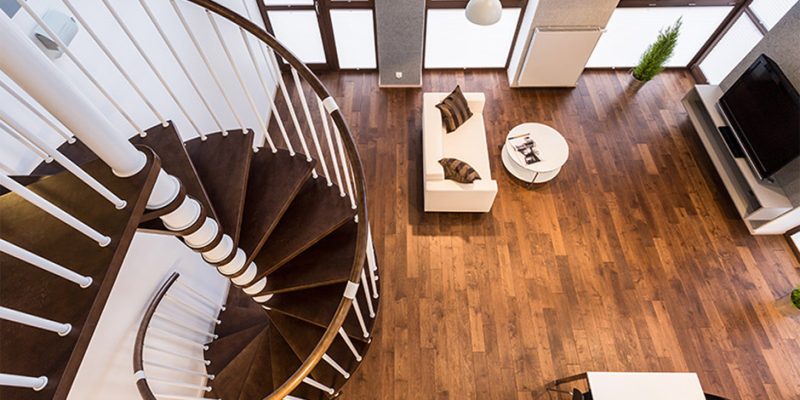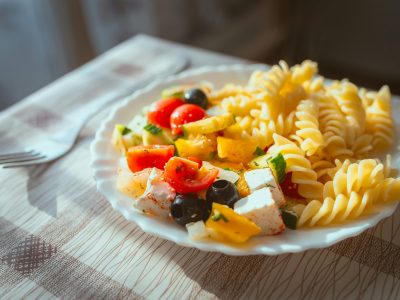Designing Your Perfect Staircase: A Step-by-Step Guide
Stairs can be more than just a functional feature; they also have a decorative element. With so many different styles and materials available, choosing the right stair design is a difficult task. This guide will walk you through all the steps to choosing the right stair design for you home.
Step 1: Take into consideration the style of your home
The style of your home is the most important thing to consider when choosing a staircase design. Your staircase is a key architectural feature in your home and should be aesthetically pleasing.
You may want to choose a staircase design that is in keeping with your home’s traditional or classic style. The classic stair designs are usually characterized by ornate balusters and carved newel post. They also feature curved handrails. These elements will add elegance and sophistication in your home.
If you live in a contemporary or modern home, then you might want to choose a stair design that is more streamlined. Modern stair designs are characterized by clean lines, simple forms, and minimal ornamentation. Glass and metal are commonly used to create a sleek minimalist look.
Not all homes fit neatly into either the traditional or modern category. Many homes are a mixture of styles, or have their own unique style. It’s crucial to select a staircase design that compliments the existing architecture and decor of your home.
Consider the colors, patterns and materials that you use throughout your home. The stair design you choose should complement these elements, and add to the overall aesthetic of your home.
You can make your staircase not only beautiful but also functional by taking into consideration the style of your home when selecting a stair design.
Step 2: Choose Your Stair Material
Choose your staircase material after you’ve decided on the style of your home. Metal is a popular option. Metal stairs can be made of a wide range of materials including steel, aluminum and wrought iron.
Durability is one of the biggest benefits of metal stairways. Metal stairs can resist heavy foot traffic, and wear and tear. The low-maintenance nature of these tiles means that they only need to be cleaned occasionally.
Metal stairs are also highly customizable. A wide variety of colors and finishes is available. You can choose a design for your stairs that matches your home’s decor and your preferences.
Metal stairs are more expensive and require professional installation. Metal stairs are more susceptible to noise and vibrations, so you should consider this when selecting a material.
Consider the style and budget of your home as well as your requirements for durability, maintenance and safety when deciding whether metal stairs are suitable for your home. Metal stairs are a great option if you want a modern and sleek stair design. They can also withstand heavy usage.
The best material for stairs in your home depends on your personal needs and preferences. You can select a stair-material that matches your home’s design and meets your needs by weighing all your options.
Step 3: Decide on Your Stair Type
After you’ve chosen the material for your stairs, you will need to choose the style of staircase you want in your home. Your choice of stair will be determined by the available space, your preferences and the style of the home.
Consider these popular staircase types:
- Straight Stairs: Straight stairs are one of the most popular types of stairs and are an excellent option for homes that have limited space. Simple and straight forward, they consist of one flight of stairs going from one level into another. These stairs can be made of a wide range of materials, and they can be customized to suit any style.
- L-Shaped Steps: The L-shaped steps are similar to straight stairways, but they have a 90 degree turn. These stairs are great for homes that have limited space as they can be placed in a corner or up against a wall. The L-shaped staircase can be constructed from many different materials, and it can be customized to suit any style of home.
- U-Shaped Stairs: U-shaped staircases are great for homes that have more space. The stairs consist of two sets of stairs going in opposite directions and are connected by an landing in the center. The U-shaped staircase can be constructed from many different materials and designed to suit any style.
- Spiral Stairs: Spiral staircases are an attractive and stylish option for your home. They can also add visual interest. Spiral stairs are an excellent option for homes that have limited space as they require less space. Metal, wood and glass are all materials that can be used to make spiral stairs.
Consider the size of the home and the type of stairs you want to install when choosing the right stair. Straight stairs work well in homes with limited space. U-shaped steps are more suitable for larger homes. Spiral staircases are an attractive and unique option for modern or contemporary homes.
You can make sure that the staircase in your home not only works well, but also enhances the aesthetics of the space.
Step 4: Select Your Staircase Components
There are many components to take into consideration when designing a staircase. Handrails, balusters and newel posts are all important components. These components can all be tailored to your taste and style to enhance the aesthetics of your space.
- Handrails: They are an important safety feature on any staircase. They offer stability and support when climbing or descending the stairs. Handrails are available in a wide range of materials including metal, wood and glass. Handrails can be made in many different shapes and styles that will complement the decor of your home.
- Balusters: The vertical posts that hold up the handrail are called balusters. These posts can be made of a variety materials including metal, wood and glass. Balusters come in many shapes and styles. They can range from the simple and classic, to ornate and decorative.
- Newel Posts are large decorative posts that appear at both the start and the end of the staircase. They can be used as anchors for balusters and to support the handrail. The newel posts are available in many materials and designs.
Consider the style and preferences of your home when choosing staircase components. Choose components that enhance the aesthetics of your home and complement its decor.
If you live in a traditional house, for example, you might want to think about classic wood balusters and handrails. If you live in a contemporary or modern home, you might want to choose sleek metal balusters and sleek metal handrails.
You can design a staircase to not only function well, but also enhance the aesthetics of the space. These components can also be customized according to your style and preferences. This will make your staircase unique and beautiful.
Step 5: Safety is a concern
Safety should always come first, even if aesthetics is a major consideration. Poorly designed or installed stairs can pose a serious safety risk, especially for children and older adults.
Consider these safety factors when selecting a staircase design.
- Local Building Codes : Make sure that your staircase complies with local safety and building regulations. These codes ensure that your staircase will be safe and secure.
- Handrails are a safety feature that is essential for any staircase. They offer stability and support when climbing or descending the stairs. The handrails must be installed on each side of the staircase, and they should be securely fixed to the wall.
- Non-Slip treads: These can prevent falls and slips on your stairs. These treads can be made of a variety materials including rubber, metal, carpet and more. The treads must be attached securely to the treads of the stairs and cover the entire surface.
- Adequate Lighting. Adequate lighting on your staircase is essential for safety, especially if your staircase is in a dimly-lit or dark area of your house. Install lights on the risers of the stairs or above to make sure that they are well lit and visible.
- Proper maintenance is essential to ensure that your staircase is safe for use. Regularly inspect your staircase for signs of wear, such as cracked treads or loose balusters. To prevent injuries, address any problems immediately.
Consider these safety features when selecting a staircase design to ensure your staircase is both beautiful and safe. Consider adding safety features such as handrails, anti-slip treads and adequate lighting in order to make your staircase safe for you and your loved ones.
Step 6: Be Creative
Don’t be afraid of being creative when selecting a staircase design for your house. Your staircase is more than just an essential part of your home. It can also be a unique and beautiful design element. Here are some creative ways to design your staircase:
- Unique Materials: Use unique materials, such as concrete, reclaimed wood or metal, for your staircase. These materials will add an interesting and unique texture to your stairs and complement the decor of your home.
- Add color to your stairs to give them a unique look. Consider painting the handrails and balusters of your staircase in a color that compliments your home.
- Custom Handrails : A handrail made to order can add a special touch to your staircase. Use a material such as metal or glass for a custom-made handrail to complement your home’s décor.
- Lighting can add a dramatic and beautiful effect to your staircase. Install lights under the treads or along the handrail to light up your stairs.
You can make your staircase a beautiful and unique feature of your home by being creative. Do not be afraid to try out different colors, materials and designs in order to create a staircase which reflects your style and enhances the design aesthetic of your home.
Consider your home’s style when choosing a staircase design. Choose your stair materials, choose your type of stair, select your components, consider safety and be creative. Follow these steps to create a staircase which not only works well, but also enhances the aesthetics of your home.













Comments